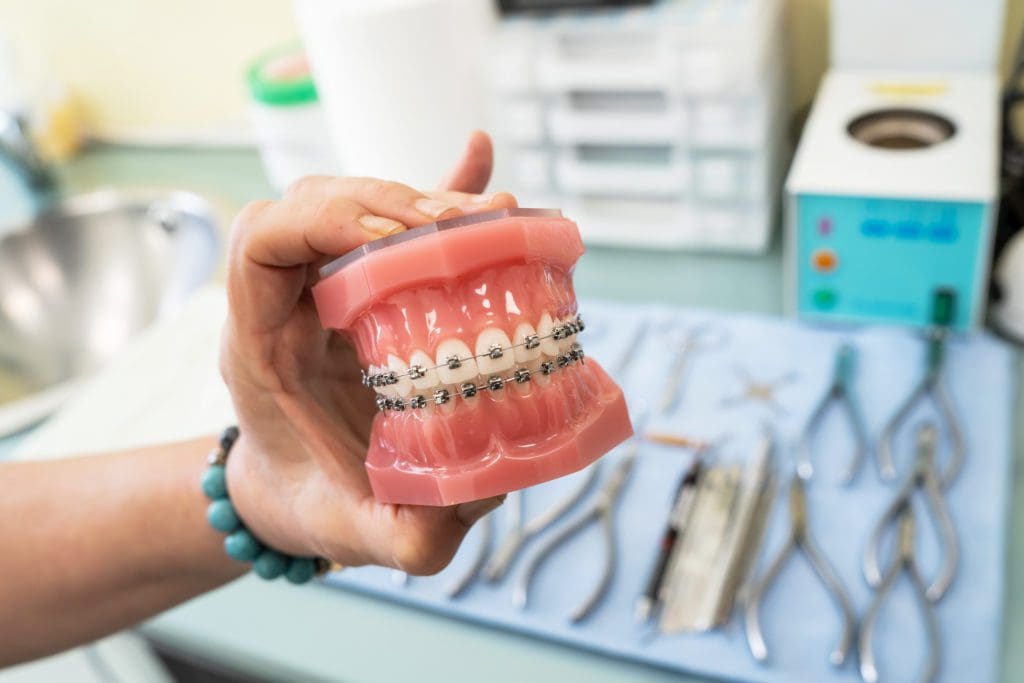How Cumming Orthodontics Addresses Common Braces and Invisalign Concerns
Comprehensive Guide to Orthodontics Treatments for Dealing With Oral Misalignments
In the world of orthodontics, the journey to achieving a completely lined up smile involves a myriad of procedures customized to correct dental misalignments. From typical dental braces to unnoticeable aligners and also surgical choices, the field of orthodontics offers a variety of solutions to address differing degrees of dental abnormalities. Understanding the details of each treatment, including their systems, advantages, and prospective drawbacks, is vital in making notified choices regarding one's orthodontic treatment. As we browse with the comprehensive guide to orthodontic procedures for remedying dental misalignments, the detailed information of each approach will unfold, clarifying the path toward a unified and practical dental placement.
Orthodontic Procedures Overview

In enhancement to clear aligners and traditional braces, orthodontists may also advise various other treatments like headgear, palatal expanders, or retainers to resolve details alignment problems (cumming braces). These treatments are tailored per patient's unique needs and might involve a mix of treatments to attain the desired results. Regular changes and monitoring are essential components of orthodontic therapy to ensure progression gets on track and to make any type of needed modifications along the road. By undergoing orthodontic treatments, clients can not only attain a straighter grin yet additionally improve their overall oral health and wellness and feature.
Standard Dental Braces: Just How They Function
When thinking about orthodontic therapies for oral misalignments, standard dental braces stand out as a time-tested technique for correcting teeth placing. Conventional dental braces are composed of brackets, cords, and bands that function with each other to use continuous pressure on the teeth, slowly relocating them right into the desired alignment.
As pressure is used to the teeth through the dental braces, the bone surrounding the teeth is improved to support the brand-new tooth placements. Patients will certainly need regular modifications at the orthodontist's workplace to guarantee the braces proceed to use the right pressure for reliable teeth activity.
Unseen Aligners: Benefits And Drawbacks
Unseen aligners offer a discreet and hassle-free alternative to standard braces for fixing oral imbalances. These clear, tailor-made trays are practically undetectable when used, making them an appealing choice for individuals looking for a much more cosmetically pleasing orthodontic treatment. One of the key benefits of invisible aligners is their removability, enabling less complicated upkeep of dental hygiene compared to standard braces. Clients can get rid of the aligners before consuming or brushing their teeth, minimizing the danger of food obtaining stuck in the device and streamlining the cleansing process.

Surgical Orthodontic Options
Surgical interventions in orthodontics present sensible alternatives for dealing with intricate oral misalignments that might not be successfully settled with traditional orthodontic treatments. While standard dental braces and invisible aligners can correct many orthodontic concerns, specific instances require surgical treatment to achieve optimum results. Surgical orthodontic alternatives are commonly advised for extreme malocclusions, considerable jaw inconsistencies, and situations where the underlying bone structure needs modification to accomplish appropriate Go Here positioning.
One typical medical orthodontic treatment is orthognathic surgery, which includes repositioning the jaws to remedy practical issues such as difficulty talking or chewing. This surgical treatment is typically carried out in cooperation with an orthodontist who aids straighten the teeth before and after the treatment. Surgical orthodontics may also involve treatments to reveal influenced teeth, get rid of excess gum tissue, or improve the jawbone to develop a more harmonious facial profile.
Prior to taking into consideration medical orthodontic choices, individuals undergo an extensive assessment to identify the necessity and potential benefits of such interventions. braces. While surgical treatment might seem overwhelming, it can significantly improve both the feature and appearances of the smile in situations where conventional orthodontic therapies fail
Retainers and Post-Treatment Treatment

Post-treatment treatment includes adhering to the orthodontist's directions vigilantly. This may consist of correct oral health techniques, participating in follow-up consultations, and wearing the retainers as prescribed. Failing to adhere to post-treatment treatment guidelines can lead to relapse, where the teeth slowly relocate back towards their original placements. Constant retainer websites wear, good dental health, and regular dental check-ups are important for preserving the outcomes attained through orthodontic surgical treatment and guaranteeing the long-term stability of the remedied dental alignment.
Final Thought
In conclusion, orthodontic treatments use various choices for correcting dental misalignments. Surgical orthodontic options are available for much more serious imbalances. Overall, orthodontic procedures can efficiently improve dental health and wellness and aesthetic appearance.
As we browse with the thorough overview to orthodontic treatments for correcting dental imbalances, the elaborate details of each method will certainly unravel, dropping light on the course toward a functional and unified oral placement. - orthodontics
One of the most common orthodontic therapies is the use of dental braces, which consist of metal braces and cables that apply mild pressure to slowly move teeth right into the preferred setting.When taking into consideration orthodontic therapies for dental imbalances, standard dental braces stand out as a reliable method for remedying teeth positioning. In addition, undetectable aligners might not be suitable for intricate orthodontic concerns that call for more considerable teeth movement, as they are typically recommended for moderate to moderate instances. Retainers are personalized orthodontic gadgets general dental office designed to hold teeth in their remedied settings after the conclusion of orthodontic therapy.